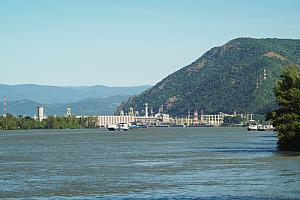Lower energy, commodity prices not visible in Romania’s industrial output yet

The lower energy and commodity prices that already surfaced in the foreign trade numbers, resulting in a smaller trade deficit in the first months of the year, have not propped Romania’s industrial activity yet, according to the February figures published by the statistics office INS.
In seasonally adjusted terms, the country’s industrial output remains at the same levels as those seen in the second half of last year while marking negative annual dynamics.
The high gas and commodity prices forced many industries to reduce or suspend activity last year, when the overall industrial output dropped by 2.7% YoY (-1.1% YoY for manufacturing) in H2.
The industrial output in the first two months of 2023 contracted by 5% YoY (-3.9% YoY for the manufacturing sector) as a result of base effects. But it remained in line if not above the values seen during H2 last year.
The sectors worst hit by the war in Ukraine were those of metallurgy (nearly -40% YoY), wood processing (except for furniture) by nearly 30% YoY and chemistry by over -20% YoY. The wood processing industry was partly using raw materials from Ukraine, while metallurgy and chemistry couldn’t cope with the scarce and expensive natural gas supply. Production of motor vehicles increased by 8.7% YoY, though, while the production of electronic and optical parts and devices surged by 14.8% YoY.
In the regional medium-term context, Romania’s industry posts among the weakest performances, besides those of Slovakia and Croatia, remaining only some 10% above the average level of 2015. Poland and Lithuania are leading with advances of around 50% versus 2015.
At the same time, however, Romania’s share of manufacturing in total GDP (19.2%) is among the highest in Central and Eastern Europe, surpassed only by those boasted by the Czech Republic (21.2%) and Slovakia (19.5%).
(Photo: Kanok Sulaiman/ Dreamstime)
andrei@romania-insider.com













